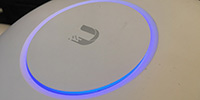The first thing to consider when planning Access Point (AP) deployment for restaurants is not, as restaurant owners often think, signal coverage. It is in fact far better to estimate the number of concurrent users in any one area. One AP may well have sufficient signal strength to cover the entire restaurant area. However, if the estimated clients using that AP at any one time is expected to exceed say 30 clients, this could well result in slower speeds for all that AP's connected users. In these instances, we would suggest deploying more AP's in the area and dialling down the signal strengths. That way the physical access points can spread the load of the Wi-Fi traffic.
Careful placement of the AP's should also be considered. If possible, placing disc AP's centrally on ceilings is generally the best idea. In some instances wall mounting them can also work well. Knowing the radio profile of the AP device is a benefit so you do not waste good signal by poor placement. I often see restaurant owners wanting to put these devices inside cupboards, behind EPOS hardware or worse still in metal cabinets. This only degrades the Wi-Fi signal causing slower performance. In my personal opinion, most modern disc AP's are not that ugly especially if they are mounted well and the Ethernet cabling is hidden.
I often see Wi-Fi deployments that are handled by multiple system vendors. The EPOS guys use their AP's and the customer Wi-Fi uses another set of AP's. These devices are often placed close together. They fight each other for airtime. In such instances, it tends to work better if all Wi-Fi networks are moved on to one system. That way they can share the wireless clients and balance the bandwidth far better. Also, in small deployments, it is far better to have two AP's broadcasting both EPOS and Customer SSID's rather than one for each SSID. This gives greater redundancy. If one AP fails, both wireless networks will at least be working well in a part of the establishment.










